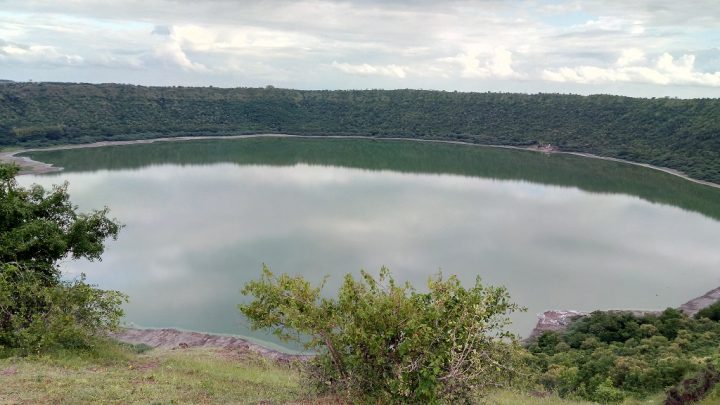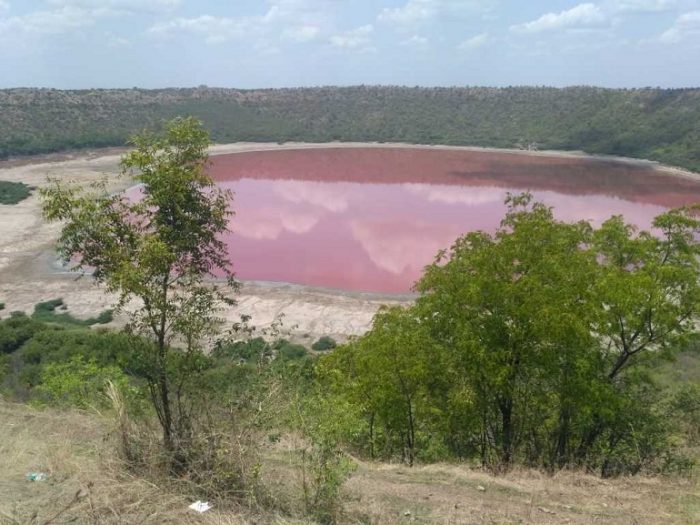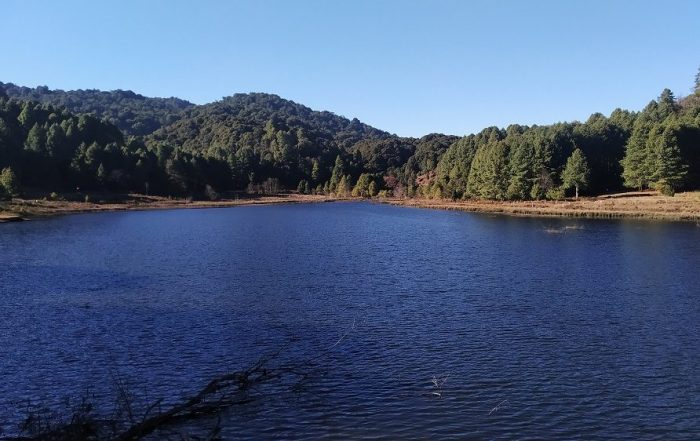Scientists doubt salinity change or presence of algae as reasons.
Buldhana (India): Lonar Lake in the Maharashtra state of India is now a bit of amazement to the world, as this lake colour changes to pink in the recent days. While the exact reason behind the phenomenon is unknown, experts believe that this occurs due to either the salinity change in the water or the presence of algae in it. It can also be a combination of both.
Similar incidents:
This is not an unprecedented event in the world. Similar hue change happened in the part of Utah’s Great Salt Lake and Lake Hillier in Australia. Whether it is a similar occurrence or not, can be concluded only after the exact reasons become known. Gajanan Kharat, a local geologist, said in a video posted to Maharashtra Tourism’s Twitter feed, that this has happened before, but was not as prominent.

Geologist’s report
“It’s looking particularly red this year because this year the water’s salinity has increased,” he said. “The amount of water in the lake has reduced and the lake has become shallower, so the salinity has gone up and caused some internal changes,” he added. Kharat said that researchers are also investigating if the presence of red algae caused the color change. “Anyway, the research team has sent the samples to various labs. Once they have studied the results, we will be able to definitively say why the lake’s water has turned pink”.

History of Lonar Lake
Lonar Lake (also called Lonar Crater) is a notified national Geo-Heritage Monument and a saline soda lake. It is located about 500 kilometers (311 miles) east of Mumbai. Geologists have proved that this lake was formed after an asteroid collision with earth impact during the Pleistocene Epoch. It is one of the four known, hyper-velocity, impact craters in basaltic rock anywhere on Earth. Lonar Lake has a mean diameter of 1.2 kilometres (3,900 ft) and is about 137 metres (449 ft) below the crater rim. The meteor crater rim is about 1.8 kilometres (5,900 ft) in diameter.
The colour change has been prominent since a couple of months. Unofficial reports say that the Initial scientific reports suggested that lowered water levels, growth of Halobacterium and Dunaliella salina, increased Carotenoid levels, which in turn led to color change. Lonar Lake lies within the only known extraterrestrial impact crater found within the great Deccan Traps, a huge basaltic formation in India. The lake was initially believed to be of volcanic origin, but now it is recognized as an impact crater. Lonar Lake was created by the impact of either a Comet or of an Asteroid. The presence of plagioclase that has been either converted into Maskelynite or contains Planar deformation features has confirmed the impact origin of this crater. It is believed that only shock metamorphism caused by a hypervelocity impact can transform plagioclase into maskelynite, or create planar deformation features.
The presence of impact deformation of basalt layers comprising the rim, of shocked Breccia inside the crater validates that the initial reports may be correct. Anyway, the world is waiting for the actual results to end one of the recent amazing facts it overlooks.




![The Top & Most Popular Seafood Bucket Restaurants in Dubai for you [Never Miss]](https://uae24x7.com/wp-content/uploads/2020/09/8-seafood-in-a-bucket-scaled-e1600739237403.jpg)
![Procedures for Renewing the Driving License in Abu Dhabi [3 Simple Steps]](https://uae24x7.com/wp-content/uploads/2020/07/Capture-9-e1595666454466.jpg)





